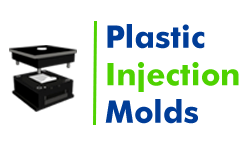- Mould Manufacturer
- Tooling
- Moulding Die
- Plastic Molding
- Plastic Injection Molding
- Injection Molding
- Nylon Injection Molding
- Injection Moulding
- Custom Injection Molding
- Injection Mould
- Injection Mouldings Process Manufacturers
- Medical Injection Molding
- Polycarbonate Injection Moulding
- Rapid Injection Moulding
- Injection Molds
- Injection Molding Cost
- Injection Molding Suppliers
- Injection Moldings
- HDPE Molding
- Metal Injection Molding
- Rubber Injection Molding
- Mold Designing
- Prototyping
- Automotive Injection Molding
- Blow Molding
- 3D Printing
Make Profit By Paying initially for the injection molding cost
One of the primary aims of any manufacturing company is to reduce production costs. But it is also essential to maintain the quality of the products and not compromising in the production process. The only way to reduce the cost of production is to use the injection molded parts.
The initial upfront cost to install the molding system may be quite high, but the long-term benefits will be high. For instance, a single tool can manufacture 25,000 parts and more. However, you should understand first how the price reduction happens.
Using a low-cost injection molding machine
While injection molding is a costly process, if you compare it to 3D printing or CNC machining, low cost injection molding can be a cost-effective solution with its ability to scale and manufacture thousands of parts.
The amount of time necessary for mass production is the chief factor that affects the price of a molding system. So, the complex geometry of the parts indicates that the manufacturing cost is higher. It will be an affordable option if you need to generate simple parts without any advanced smooth finishing or undercuts.
Bulk manufacturing of injection molding small parts
If you own a business in the automotive industry, then you have to produce plenty of small parts invariably. The injection molding cost will be much lower than installing a complete manufacturing system involving many machines. The initial investment will be a considerable amount. But it will help to generate small parts in bulk volume.
Eliminate unnecessary features
As you make the prototype through large part injection molding, you can analyze and detect the features that are actually unnecessary for the product. Check out the prototype and think about the features like the company’s logo, textured surface finishing, and molded part numbers. But permanent part numbers are mandatory when you are making military applications ad aerospace machines.
Reduce human interference
With injection molding small parts, you can actually eliminate maximum human labor as the system can be completely automatic. Automation is the best way to reduce human resource-related costs to the company. The purchasing of the machine is a one-time investment but employing human labor is a recurring expenditure.
Injection-molded parts support bulk production
How can you earn a profit without increasing production costs? It is by maximizing the volume of production. The low volume injection molding cost is higher than the high-volume production. You can depend on the moulding machines with bulk production of the parts that will immediately increase the profit ratio.
Consult with the reputed injection moulding products manufacturers, and you will understand better the calculations that prove how a company can benefit from investing in molding services. It will also help you to expand by offering the necessary infrastructure to support production pressure.
FAQ
- Q1. How Large Can An Injection Mold Be?
Injection molds can vary in size, ranging from small to extremely large. The size depends on factors like the product's dimensions and complexity. Large injection molds can be several feet in size, accommodating big parts. Advanced technologies and materials enable the production of molds tailored to specific needs, including sizable ones.
- Q2. What Are The Size Limitations Of Injection Molding?
Injection molding has size limitations based on the capacity of the molding machine and mold design. Small parts with intricate details are feasible. Larger parts may require specialized equipment or assembly of smaller components. Manufacturers consider factors like material flow and cooling time to optimize production for different sizes.
- Q3. What Is The Minimum Thickness For Injection Molding?
The minimum thickness for injection molding typically ranges from 0.5mm to 2mm, depending on factors like material and design. Thinner sections may lead to issues like warping or insufficient strength. Designers should consider material properties and part function when determining minimum thickness to ensure successful molding.







.webp)

